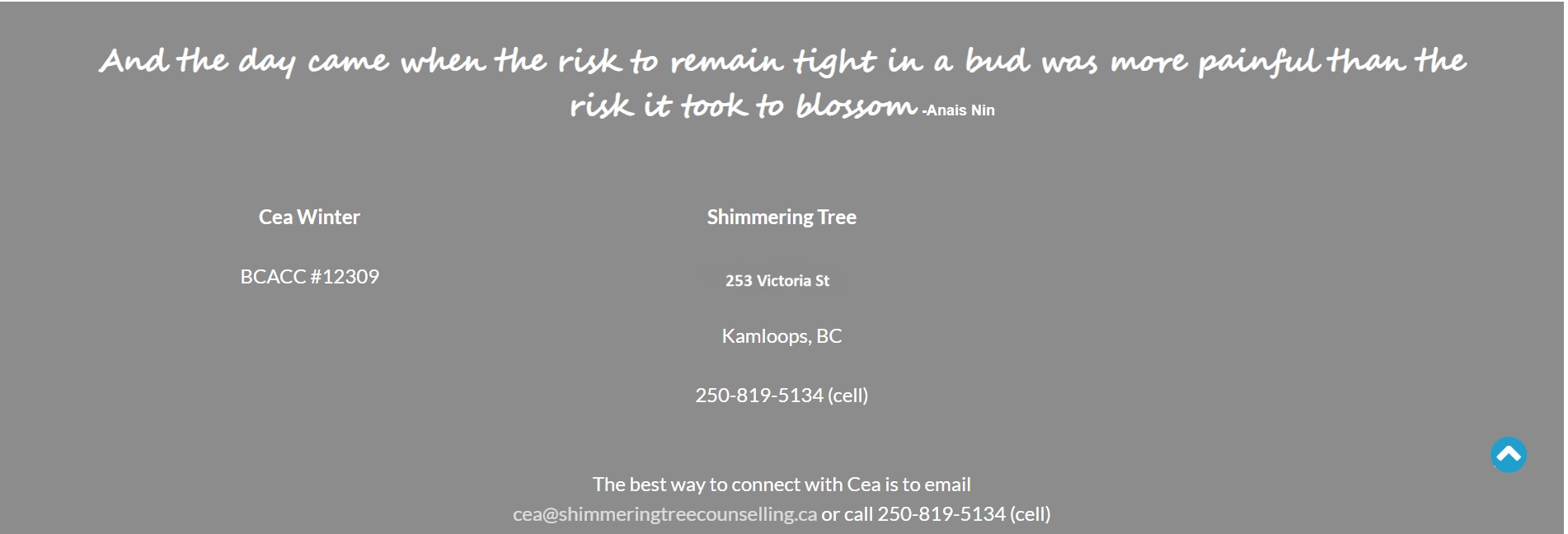TRAUMA RECOVERY THERAPY
PTSD – Post Traumatic Stress Disorder
Common situations that may result in trauma or PTSD are: motor vehicle accident, high fever or illness, bullying, medical or dental surgery, relationship violence, attack, war, natural disasters, falls… any situation, whether or not it appears “major,” where a person feels helpless and unable to escape or to defend his or herself from threat.
While early symptoms of Post-traumatic stress disorder may begin right after a traumatic event, if the symptoms persist or increase past three months after the event it is considered chronic PTSD. Sometimes, however, symptoms do not appear until years after the event. These symptoms can cause significant problems in social or work situations and in relationships.
Symptoms of Trauma
It’s important to view these symptoms as our body’s way of signalling that something is not right- that it needs our attention. If the body’s messages go unanswered, they can develop into increasing complex and ever-present symptoms, more generalized, becoming less and less connected with the original trauma experience.
Early Symptoms of Trauma
After an overwhelming event or a series of stressful situations, the first symptoms likely to develop:
- hyperarousal (increase in heart rate, sweating, difficulty breathing (rapid, shallow, panting, etc), cold sweats, tingling and muscle tension; mentally as repetitious and racing thoughts, anxiety)
- constriction and narrowing of perception (alters breathing, muscle tone, posture, less blood flow to extremities; disturbed digestion)
- dissociation or denial (feeling disconnected from the body, numb or “shut down”)
- feelings of helplessness, immobility and freezing (feeling collapsed, immobilized, completely helpless)
Some of the following symptoms can appear right away or shortly after these initial symptoms:
- hypervigilance (being on guard at all times)
- intrusive imagery or flashbacks
- extreme sensitivity to light and/or sound
- hyperactivity
- exaggerated emotional and startle responses
- nightmares and night terrors
- abrupt mood swings (rage, temper tantrums, frequent anger or crying)
- shame and lack of self-worth
- reduced ability to deal with stress (easily and frequently stressed out)
- difficulty sleeping
Later Symptoms of Trauma
- panic attack, anxiety and phobias
- mental “blankness” or spaced-out feelings
- avoidance behavior (avoiding places, activities, movements, memories or people)
- attraction to dangerous situations
- addictive behaviors (overeating, drinking smoking, etc)
- exaggerated or diminished sexual activity
- amnesia and forgetfulness
- inability to love, nurture or bond with other individuals
- fear of dying or having a shortened life
- self mutilation (severe abuse, self-inflicted cutting, etc)
- loss of sustaining beliefs (spiritual, religious, interpersonal)
Final Group of Trauma Symptoms
The last group of symptoms are those that often take longer to develop:
- excessive shyness
- diminished emotional responses
- inability to make commitments
- chronic fatigue or very low physical energy
- immune system problems, some endocrine problems like thyroid issues and environmental sensitivities
- psychosomatic illnesses like headaches, migraines, neck and back problems
- chronic pain
- fibromyalgia
- asthma
- skin disorders
- digestive problems
- severe premenstrual syndrome
- depression and feelings of impending doom
- feelings of detachment, alienation and isolation (“living dead” feelings)
- reduced ability to formulate plans
Benefits of Doing Self Regulation Therapy
Self Regulation Therapy can help reduce or eliminate symptoms of trauma and dysregulation in adults, children and youth.
Dysregulation is the inability to modulate emotional and behavioral responses, as a result of developmental derailments or shock trauma, which manifests in many mental/emotional disorders or symptoms of dysregulation including:
- post-traumatic stress disorder
- anxiety, panic attacks
- phobias
- mood disorders
- personality disorders
Physical symptoms of dysregulation including:
- insomnia
- asthma
- allergies
- migraines
- tinnitis (ringing in the ears)
- hyperacusis (sensitivity to sound)
- photophobia (sensitivity to light)
- chronic pain
- fibromyalgia
- chronic fatigue
- autoimmune diseases
- gastrointestinal difficulties
- headaches
- pain in neck and back
- temporomandibular joint dysfunction (TMJ)
- alcohol and drug abuse
See more on Self Regulation Therapy http://www.cftre.com/courses-seminars/what-is-self-regulation-therapy/
Methods For Working with Children
I use Mindful Expressive Arts, the sandtray and play in combination with specialized Self Regulation Therapy techniques to support processing, rehabilitation, and emotional, cognitive and physical integration of the child. If a threatening event occurs during a child’s development, such as a difficult birth, fall or separation from a parent, trauma may occur, interfering with physical and neurological development that stage, which can result in developmental delays and other problems. Self Regulation therapy can help improve or correct these issues.
Sandplay therapy is a creative form of psychotherapy that uses a sandbox and a large collection of miniatures to enable a child to explore, process and integrate the deeper issues.
Play is how children process and each of the methods I use offers the child verbal as well as non-verbal ways of ‘telling his/her story, ‘ expressing emotions and coming to resolution through embodied imagination, in the safety and comfort of an attuned adult.
If any of this resonates as true for you or someone you love, contact Cea at 250-819-5134, or cea@shimmeringtreecounselling.ca to find out more. Request a 15 minute phone meeting to ask questions and see if this is what you’re looking for.

